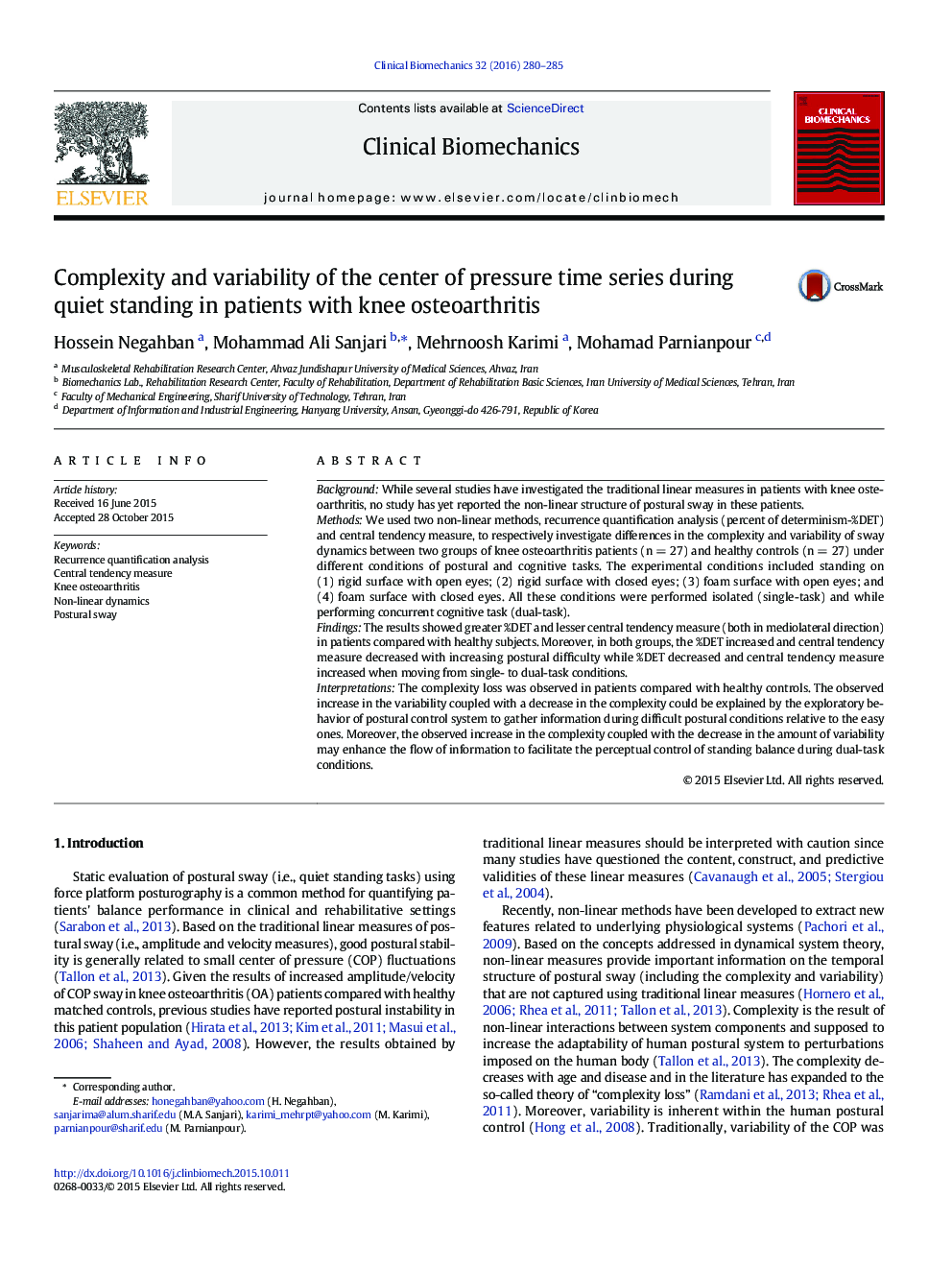| کد مقاله | کد نشریه | سال انتشار | مقاله انگلیسی | نسخه تمام متن |
|---|---|---|---|---|
| 6204671 | 1603746 | 2016 | 6 صفحه PDF | دانلود رایگان |
- The complexity loss was observed in patients compared with healthy controls.
- Decreased complexity was seen by increased postural difficulty in both groups.
- Increased variability was seen by increased postural difficulty in both groups.
- Increased complexity was seen by increased cognitive difficulty in both groups.
- Decreased variability was seen by increased cognitive difficulty in both groups.
BackgroundWhile several studies have investigated the traditional linear measures in patients with knee osteoarthritis, no study has yet reported the non-linear structure of postural sway in these patients.MethodsWe used two non-linear methods, recurrence quantification analysis (percent of determinism-%DET) and central tendency measure, to respectively investigate differences in the complexity and variability of sway dynamics between two groups of knee osteoarthritis patients (n = 27) and healthy controls (n = 27) under different conditions of postural and cognitive tasks. The experimental conditions included standing on (1) rigid surface with open eyes; (2) rigid surface with closed eyes; (3) foam surface with open eyes; and (4) foam surface with closed eyes. All these conditions were performed isolated (single-task) and while performing concurrent cognitive task (dual-task).FindingsThe results showed greater %DET and lesser central tendency measure (both in mediolateral direction) in patients compared with healthy subjects. Moreover, in both groups, the %DET increased and central tendency measure decreased with increasing postural difficulty while %DET decreased and central tendency measure increased when moving from single- to dual-task conditions.InterpretationsThe complexity loss was observed in patients compared with healthy controls. The observed increase in the variability coupled with a decrease in the complexity could be explained by the exploratory behavior of postural control system to gather information during difficult postural conditions relative to the easy ones. Moreover, the observed increase in the complexity coupled with the decrease in the amount of variability may enhance the flow of information to facilitate the perceptual control of standing balance during dual-task conditions.
Journal: Clinical Biomechanics - Volume 32, February 2016, Pages 280-285
